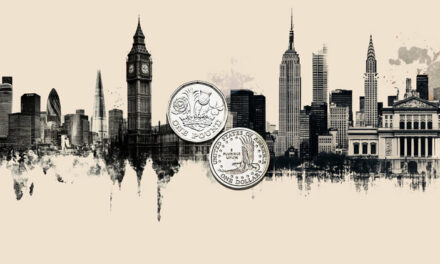The US Dollar saw a general easing throughout most of the week as investors remained hopeful that everything would work out okay. A renewed uptick in trade war rhetoric from US President Donald Trump at the tail end of the trading week knocked investor sentiment sharply back, giving the safe haven US Dollar (USD) a foothold heading into a long weekend.
The US Dollar Index (DXY) is poised for a potential bearish turnaround next week after a weak push into the high side of near-term consolidation. Global markets pushed the DXY upwards through the 98.00 level, briefly piercing 99.50 before renewed USD aversion on trade war rhetoric sent the US Dollar Index back below 99.00 to close out the trading week. President Donald Trump wants to slap a fresh round of punishing tariffs on anyone who imports Chinese-made goods in retaliation for China imposing steep licensing requirements for any foreign company that exports rare earth minerals out of China, a move that deals a sharp blow to Trump’s plans to bully the planet into rare metals submission.
US markets will be shuttered on Monday for the Columbus Day holiday, but then American session traders will be returning to the fold with fresh tariff fears on their minds, coupled with a US government funding shutdown that is showing no signs of resolution. Federal Reserve (Fed) Chair Jerome Powell makes an appearance on Tuesday, and key Producer Price Index (PPI) business-level inflation data is slated for Thursday.
Unremarkability is the name of the game for EUR/USD next week. The Fiber found a messy technical foothold near 1.1600 to cap off an otherwise one-sided week. Despite a number of red-flag events on the data docket, none of them are likely to drive meaningful volatility. Final German Harmonized Index of Consumer Prices (HICP) inflation figures for September are due on Tuesday, but the final reading rarely deviates from expectations. European Central Bank (ECB) President Christine Lagarde will make public speeches on Thursday and Saturday, but Lagarde’s penchant for delivering non-market-moving talking points is legendary.
GBP/USD caught a meager rebound on Friday, bouncing from the 200-day Exponential Moving Average (EMA) and giving Cable traders hopes for a near-term bullish leg. However, lower highs and lower lows are keeping topside potential on the limited side. UK labor and unemployment figures are due on Tuesday, and Bank of England (BoE) Governor Andrew Bailey will be speaking next Saturday during the Group of Thirty International Banking Seminar in Washington, DC.
XAU/USD is closing out a record-setting week after Gold prices clawed their way above $4,000 per ounce. Ongoing political tensions both at home and abroad in the US are keeping investors off-balance, forcing speculators to keep one foot in safe havens until the Trump administration figures out how to solve its problems with meaningful actions instead of social media announcements.
WTI plummeted below $60 per barrel for the first time in five months on Friday as investor risk aversion grips energy commodities. Trump’s newfound tariff threats against China knocked barrel traders for a loop, who were already on the back foot as the Organization of the Petroleum Exporting Countries (OPEC) Crude Oil consortium edges further into production cap increases. Oil markets are catching bearish flags on both sides as OPEC cap increases and fresh US-China trade war concerns work in tandem to threaten global Oil demand, which was already struggling heading into the third quarter.
Key events in the upcoming week:

US Dollar FAQs
The US Dollar (USD) is the official currency of the United States of America, and the ‘de facto’ currency of a significant number of other countries where it is found in circulation alongside local notes. It is the most heavily traded currency in the world, accounting for over 88% of all global foreign exchange turnover, or an average of $6.6 trillion in transactions per day, according to data from 2022.
Following the second world war, the USD took over from the British Pound as the world’s reserve currency. For most of its history, the US Dollar was backed by Gold, until the Bretton Woods Agreement in 1971 when the Gold Standard went away.
The most important single factor impacting on the value of the US Dollar is monetary policy, which is shaped by the Federal Reserve (Fed). The Fed has two mandates: to achieve price stability (control inflation) and foster full employment. Its primary tool to achieve these two goals is by adjusting interest rates.
When prices are rising too quickly and inflation is above the Fed’s 2% target, the Fed will raise rates, which helps the USD value. When inflation falls below 2% or the Unemployment Rate is too high, the Fed may lower interest rates, which weighs on the Greenback.
In extreme situations, the Federal Reserve can also print more Dollars and enact quantitative easing (QE). QE is the process by which the Fed substantially increases the flow of credit in a stuck financial system.
It is a non-standard policy measure used when credit has dried up because banks will not lend to each other (out of the fear of counterparty default). It is a last resort when simply lowering interest rates is unlikely to achieve the necessary result. It was the Fed’s weapon of choice to combat the credit crunch that occurred during the Great Financial Crisis in 2008. It involves the Fed printing more Dollars and using them to buy US government bonds predominantly from financial institutions. QE usually leads to a weaker US Dollar.
Quantitative tightening (QT) is the reverse process whereby the Federal Reserve stops buying bonds from financial institutions and does not reinvest the principal from the bonds it holds maturing in new purchases. It is usually positive for the US Dollar.







